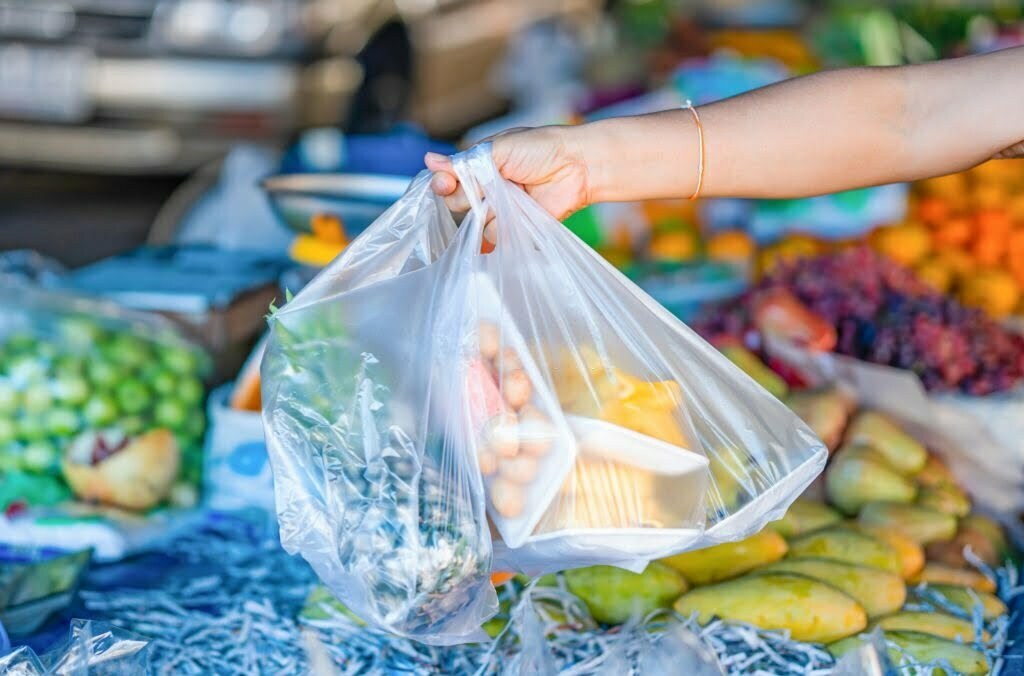

Everyone knows what plastics are. However, when it comes to biodegradable plastics, many are still in the unknown.
In this post, we will highlight the different types of biodegradable plastics on the market.
Biodegradable plastic is a type of plastic that degrades within a specific amount of time.
Degradation could be a result of human actions or the activities of naturally occurring microorganisms such as fungi, algae, and bacteria.
Biodegradable plastics are environmentally friendly and are not expected to release carbon. Most biodegradable plastics are a combination of organic materials, such as cellulose and starch and chemical additives that degrade into biomass, carbon dioxide, mineral salts, methane, and water.
Over time, microorganisms present in the environment have the ability to degrade biodegradable plastics by entering the microbial food chain. Biodegradation is not defined in terms of raw-material basis, rather on the chemical composition of the polymers.
Hence, biodegradation of plastics is not a uniform process as disposal conditions vary from region to region. However, biodegradation of plastics can be tailored specifically under the inherent environmental stress in biological systems either naturally or by enzyme-assisted mechanisms.
The following are the five types of biodegradable plastics on the market today.
Hydro-biodegradable plastic is made from plant sources e.g. starch. The degradation is initiated by a process called hydrolysis. Hydro-plastics are the only bioplastics that can decompose both in water and soil.
They are temperature resistant and are usually composted in an industrial composter. In general, hydro-biodegradable plastics can’t be recycled with other polymer components of waste. Although this type of plastic degrades faster than oxo-biodegradable plastics, they would first have to be extracted from the waste stream and treated separately, which is more expensive.
This poses a challenge for recyclers as they find it difficult to physically distinguish the two types of plastics. The main benefit of hydro-biodegradable plastics is that they can be composted if collected, but experts fear this could harm plastic recycling as a whole.
Commonly perceived to be biodegradable, oxo-biodegradable plastics are conventional plastics with additives that fast track the breakdown process through exposure to sunlight and oxygen.
This type of plastic does not fully degrade because the additives’ role is simply to promote fragmentation of the materials. That is, it breaks down the materials into tiny fragments that remain in the environment.
The result is a huge quantity of microplastics rather than a biological material. The purpose of oxo-biodegradable plastics is to quicken the natural fragmentation processes by breaking down plastics into smaller particles.
The major difference between oxo-biodegradable plastic and hydro-biodegradable plastic is that the former can be made from recycled plastic while the latter cannot.
This means that oxo-biodegradable plastics can be recycled with other clean commercial polyolefin wastes, provided the necessary additives are added to obtain the desired level of degradation.
There are two types of oxo-biodegradable plastics on the market, they are:
As the name implies, photo-biodegradable plastics react to UV (ultra-violet) light for their degradation. When subjected to a different environment (other than UV light), it will not degrade. Photo-biodegradable plastics require initial oxo-degradation.
These plastics are derived from plants and can be either partly or fully biodegradable. Bioplastics will be considered biodegradable if they can degrade into carbon dioxide, biomass, and water in a specific time frame (depending on different standards).
Some bioplastics are made up of chemical compounds that are derived from microbes such as bacteria or by GMP (Genetically Modified Plants).
These plastics are derived from synthetic polymers, moldable plastic material, and are considered harmful to the environment.
Other biodegradable plastics available in the market are:
Some other biodegradable forms of plastics are made from banana peel, waste frying oil, sugar, avocado, etc. Plastic bag manufacturers are currently researching these types of plastics.
The end result of the biodegradation process produces biomass, water, carbon dioxide through the action of microorganisms such as bacteria and fungi. Also, there is no particular timescale specified for such degradation.
The biodegradation process will be short and successful when it’s under the right conditions.
For more information, get in touch with Teong Chuan Plastic (M) Sdn Bhd, your reliable plastic bag manufacturer and supplier.